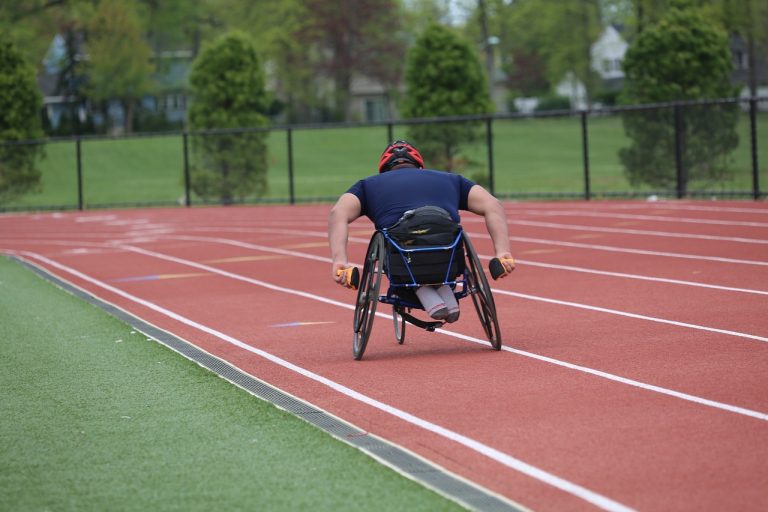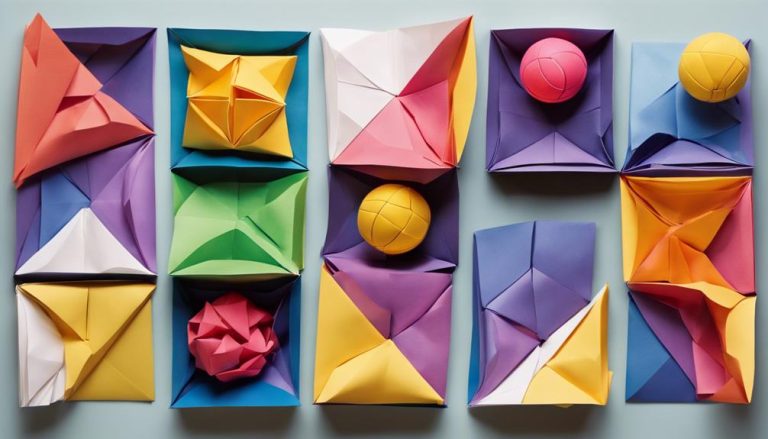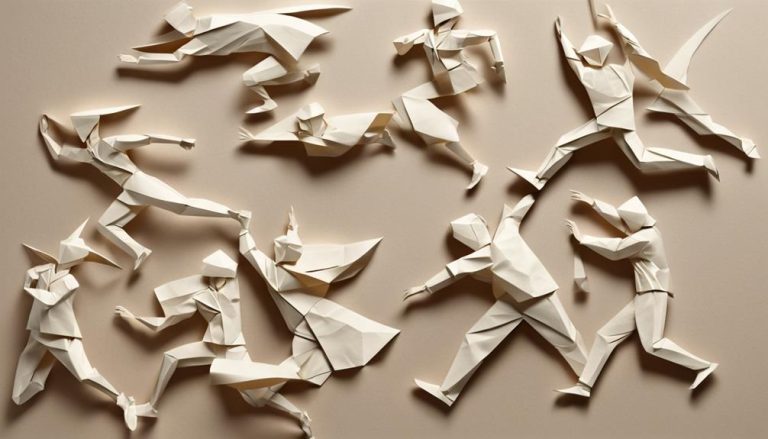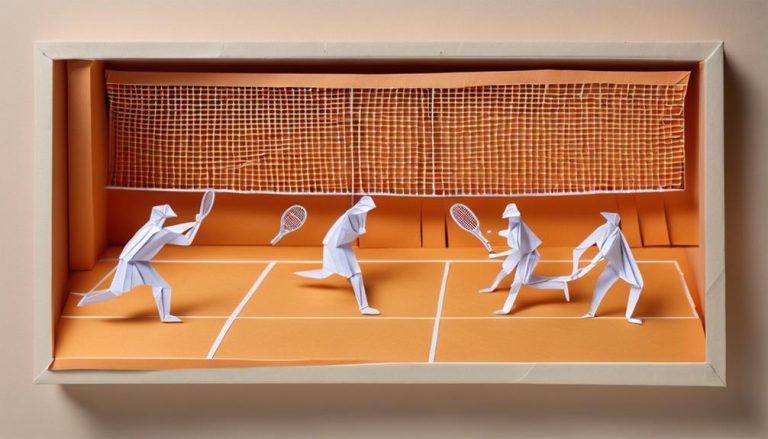General Rules of Inline Hockey
In inline hockey, make sure you have proper gear for safety. Maintain your equipment regularly for peak performance. Team dynamics matter; assign roles based on skills and build strong communication. Understand game management, including time and substitution rules. Know rink specifications to strategize effectively. Master face-off techniques for possession advantage. Stick to penalties and enforcement guidelines to uphold fair play. Goalies have specific restrictions and gear requirements. Learn game rules like offside and icing for a smooth flow. Explore overtime regulations for sudden death scenarios. Be alert to referee signals for game-changing calls. More rules await for your in-depth knowledge.
Equipment Requirements
When gearing up for inline hockey, make sure you have the necessary equipment to stay safe and perform at your best. Equipment maintenance is vital in inline hockey to make sure your gear functions properly and keeps you protected. Before each game or practice, check your equipment for any signs of wear and tear. Make sure your helmet fits securely, your pads are in good condition, and your skates are properly sharpened. Following safety guidelines is essential to prevent injuries on the rink.
As a player, it is your responsibility to adhere to gear requirements set by the league or organization you are playing with. This includes wearing a helmet, shoulder pads, elbow pads, gloves, shin guards, and skates. Your helmet should have a chin strap and fit snugly on your head. Shoulder pads and elbow pads should cover the necessary areas and allow for full range of motion. Gloves should provide protection for your hands and wrists, while shin guards protect your lower legs. Skates should fit comfortably and offer proper ankle support.
Team Composition
To build a successful inline hockey team, understanding the ideal team composition is essential for achieving peak performance on the rink. Team dynamics and player roles play a critical role in shaping how your team functions during matches. Here's a breakdown of key elements to contemplate:
- Player Roles: Each player on your inline hockey team brings a unique set of skills to the game. It's important to assign roles based on these abilities. From goal scorers to playmakers, defense specialists to goaltenders, every position requires specialized skills and expertise.
- Communication Strategies: Effective communication on the rink can make or break a game. Developing clear signals, calls, and strategies can help your team coordinate plays seamlessly. Encouraging open communication among team members guarantees everyone is on the same page during fast-paced gameplay.
- Team Chemistry: Building strong bonds between team members fosters a positive atmosphere that translates into better performance. Team chemistry is about trust, respect, and understanding each other's strengths and weaknesses. When players gel well off the rink, it often reflects positively on their teamwork during matches.
- Adaptability: Inline hockey is a dynamic sport, and being able to adapt to different game situations is vital. Flexibility in player positions, strategies, and game plans can give your team the edge in challenging moments. Emphasize the importance of being versatile and quick to adjust to changing circumstances to maintain a competitive advantage.
Game Duration
Let's talk about the points when it comes to inline hockey game duration. Understanding the time per match and the overtime rules is essential for players and fans alike. These points can greatly impact the outcome of the game and add to the excitement of inline hockey matches.
Time per Match
Understanding the duration of each inline hockey match is essential for players to strategize effectively and manage their performance efficiently. Here are some key points about the time per match:
- Regulation matches typically last 45 minutes, divided into three 15-minute periods.
- Substitution rules allow players to change on the fly, ensuring fresh legs on the rink.
- Strategic timeouts can be called to regroup and plan tactics, vital for clock management.
- Clock stops during stoppages in play, giving teams brief moments to catch their breath and plan their next moves.
Mastering time management and being aware of these aspects will give you an edge on the inline hockey rink.
Overtime Rules
When it comes to inline hockey extra time rules, players must be well-versed in the additional game duration regulations to adapt their gameplay effectively. Extra time in inline hockey can be both thrilling and intense, requiring players to strategize carefully to secure a victory. Player fatigue becomes a significant factor during extra time, making endurance and mental toughness essential for success. In pressure situations, teams often rely on quick changes and precise passing to create scoring opportunities. Game-winning goals in extra time can come suddenly, so staying focused and maintaining composure are essential. Here is a table summarizing key aspects of inline hockey extra time rules:
| Extra Time Rules | Description |
|---|---|
| Extra Time Duration | Typically 5 minutes |
| Sudden Death | First team to score wins |
| Strategies | Quick changes, precision passing |
| Player Fatigue | Endurance and mental toughness essential |
Rink Dimensions
When it comes to inline hockey rinks, understanding the standard size is vital for gameplay. The boundary line specifications demarcate the playing area, influencing strategy and movement. Let's explore these elements further for a thorough grasp of rink dimensions in inline hockey.
Standard Rink Size
In inline hockey, the standard rink size, also known as the rink dimensions, plays a significant role in shaping the dynamics of the game. Here's how the standard rink size influences player positioning, offensive strategies, defensive formations, and scoring techniques:
- Player Positioning: The size of the rink affects how players position themselves on the court, determining the distance between offensive and defensive players.
- Offensive Strategies: Teams need to adapt their offensive plays based on the rink size, utilizing quick passes and strategic movements to create scoring opportunities.
- Defensive Formations: Defenders must adjust their formations to cover the rink effectively, considering the space available for opponents to maneuver.
- Scoring Techniques: Players often use the rink size to their advantage, implementing shooting techniques that exploit the dimensions to score goals efficiently.
Boundary Line Specifications
The Boundary Line Specifications in inline hockey, also referred to as the rink dimensions, dictate the permissible playing area for teams to compete within. Understanding these dimensions is essential for players to strategize effectively during gameplay. Player substitution is allowed at designated areas on the rink to maintain the flow of the game. The goal line dimensions mark the area where a goal can be scored, providing a clear boundary for successful shots. Below is a table outlining the standard boundary line specifications for inline hockey rinks:
| Boundary Line | Dimensions |
|---|---|
| Rink Length | 200 feet |
| Rink Width | 85 feet |
| Goal Line | 11 feet |
| Faceoff Circle | 15 feet diameter |
| Crease Area | 5 feet |
Face-Off Procedures
To begin a face-off in inline hockey, the referee drops the puck at the designated spot on the rink. Face-offs are pivotal moments in a game, often determining possession and setting the tone for the play that follows. Here are some key aspects to ponder for successful face-offs:
- Face-Off Techniques: Mastering different face-off techniques can give you the upper hand. Experiment with the forehand, backhand, and tie-up moves to outmaneuver your opponent.
- Face-Off Strategies: Developing effective strategies can help you anticipate your opponent's moves. Whether you aim to win the puck cleanly or disrupt the other player's play, having a plan can increase your chances of success.
- Face-Off Positioning: Proper positioning is vital for gaining leverage during a face-off. Make sure your body is balanced, your stick is ready, and your feet are firmly planted to react quickly to the puck drop.
- Timing is Key: Timing your movements is crucial to winning a face-off. Anticipate the referee's actions and be ready to react swiftly to gain control of the puck before your opponent.
Penalties and Fouls
When penalized in inline hockey, players must follow specific rules and regulations to guarantee fair play and maintain the integrity of the game. Player behavior is closely monitored, and disciplinary actions are taken when necessary to make sure that the game is played in a respectful and sportsmanlike manner. It is essential for players to adhere to these guidelines to promote a safe and enjoyable experience for everyone involved.
Rule enforcement is important in inline hockey to uphold fairness and protect player safety. Penalties and fouls are called by officials when players engage in illegal or dangerous conduct on the rink. These infractions can range from minor penalties, such as tripping or holding, to major penalties for more severe offenses like fighting or checking from behind. By strictly enforcing these rules, the league aims to create a competitive yet secure environment for all participants.
When a player receives a penalty, they are required to serve time in the penalty box, leaving their team short-handed. This not only penalizes the individual player but also affects the team as a whole. It is essential for players to understand the consequences of their actions and aim to play within the established rules to avoid putting their team at a disadvantage. By emphasizing player accountability and adherence to regulations, inline hockey can maintain its reputation as an exciting and fair sport.
Goalie Restrictions
As you navigate the dynamics of penalties and fouls in inline hockey, understanding the specific restrictions imposed on goalies becomes pivotal for maintaining a balanced and competitive gameplay environment. Goalies play an essential role in the team's defense, and certain rules are in place to guarantee fair play. Here are some important goalie restrictions to keep in mind:
- Restricted Movement: Goalies are not allowed to cross the center line of the rink. This restriction aims to prevent goalies from interfering with the game in the offensive zone.
- Limited Goalie Equipment: Goalies must wear approved protective gear, but excessive padding beyond standard regulations is not permitted. This rule ensures fair play and prevents goalies from gaining an unfair advantage.
- No Shooting: Goalies are restricted from intentionally shooting the ball towards the opponent's goal. This rule maintains the integrity of the game and prevents goalies from taking advantage of their position.
- Positioning Rules: Goalies must adhere to specific positioning rules within the crease area. Proper goalie strategy and positioning are essential for effective defense and preventing goals.
Understanding these goalie restrictions is key to maintaining a level playing field in inline hockey. By following these rules, goalies can contribute to an exciting and fair game while showcasing their skills in a competitive environment.
Offside and Icing Rules
Understanding the Offside and Icing Rules in inline hockey is essential for players to navigate the rink effectively and abide by the regulations that govern gameplay. Offside positioning is a critical aspect to grasp. In inline hockey, a player is considered offside if they enter the offensive zone before the puck. This rule aims to prevent unfair advantages and maintain a strategic balance between offense and defense. Being offside results in a stoppage of play and a face-off outside the zone.
On the other hand, icing penalties play a significant role in shaping offensive strategy and defensive tactics. Icing occurs when a player shoots the puck from behind the center line, and it crosses the opponent's goal line without being touched. The play is then stopped, and the game resumes with a face-off in the defending team's zone. Teams often use icing strategically to relieve pressure or make line changes, but it can also lead to defensive vulnerabilities if overused.
Mastering the nuances of offside positioning and avoiding icing penalties can enhance your team's performance on the rink. By understanding these rules, you'll be better equipped to make strategic decisions that contribute to your team's success.
Overtime Regulations
Alright, let's talk about the POINTS in Inline Hockey's Overtime Regulations. These include the Sudden Death Rule and the Shootout Format. Understanding these key components will help you navigate the thrilling moments of overtime play in inline hockey.
Sudden Death Rule
When entering sudden death overtime in inline hockey, be prepared for an intense and fast-paced conclusion to the game. Here are some key points to keep in mind:
- Quick Shifts: Teams need to swiftly switch between offense and defense to capitalize on any opportunities that arise.
- Communication: Clear and concise communication among teammates is pivotal to guarantee everyone is on the same page during the high-pressure moments.
- Maintaining Composure: It's imperative to stay calm and composed under pressure to make smart decisions and execute plays effectively.
- Capitalizing on Mistakes: Teams must be ready to pounce on any mistakes made by the opposition, as one small error can quickly turn the game in their favor.
Sudden death overtime requires sharp skills and a strategic mindset to secure victory.
Shootout Format
As the intense sudden death overtime comes to a close, the shootout format in inline hockey introduces a thrilling and decisive way to determine the game's outcome. When a tie persists after overtime, the shootout begins, pitting player skills and goalie tactics against each other. Here are some shootout strategies and scoring techniques to keep in mind:
| Shootout Strategies | Player Skills |
|---|---|
| Deception | Quick release |
| Change of pace | Accuracy |
| Shot selection | Puck handling |
| Reading the goalie | Creativity |
| Confidence | Focus |
Goalies also need to anticipate these moves and employ various tactics to block shots effectively. Mastering these skills can be the difference between victory and defeat in an inline hockey shootout.
Referee Signals
In Inline Hockey, referees use a series of hand signals to communicate important calls and decisions during the game. This form of referee communication is vital for maintaining order on the rink and ensuring fair play. Understanding these signals can help players grasp the flow of the game and stay informed about rule enforcement.
Here are some common hand signals used by referees in Inline Hockey:
- High Sticking: The referee will raise one hand above their head with a closed fist, indicating a high-sticking infraction. This signal reminds players to keep their sticks below the shoulder level to prevent dangerous plays.
- Tripping: To signal a tripping penalty, the referee will extend one leg slightly forward and use their arm to mimic a sweeping motion just above the knee. This call serves as a warning to players to avoid using their stick or body to trip opponents.
- Interference: When a referee signals interference, they will cross their arms in front of their chest. This gesture alerts players to refrain from impeding the progress of their opponents without possession of the puck.
- Delayed Penalty: In the case of a delayed penalty, the referee will raise their arm with an open palm facing upwards. This signal informs the offending team that a penalty will be called once they gain control of the puck, allowing for a last-chance scoring opportunity.
Frequently Asked Questions
Can Players Wear Any Type of Footwear for Inline Hockey, or Are Specific Inline Skates Required?
You should opt for inline skates when playing inline hockey. While other footwear might seem comfortable, using the right skates is important for safety and performance. Different skate options cater to various skill levels and preferences.
Are There Any Restrictions on the Type of Stick That Players Can Use in Inline Hockey?
When playing inline hockey, you can choose from various types of sticks. However, there may be material restrictions based on league rules. Make sure to check the regulations to guarantee your stick is compliant.
Is There a Specific Age Requirement to Participate in Inline Hockey Leagues or Tournaments?
To participate in inline hockey leagues or tournaments, age requirements vary. Competitive leagues often have specific age brackets to guarantee fair play and skill levels, while recreational play may be open to all ages.
Are There Any Specific Rules Regarding Player Substitutions During a Game of Inline Hockey?
When it comes to player rotations in inline hockey, it's crucial to master the bench etiquette. Seamless changes maintain the game's flow, so ensure you're prepared to hustle in and out efficiently.
Are There Any Regulations on the Use of Protective Gear, Such as Helmets and Padding, in Inline Hockey?
When playing inline hockey, you must adhere to strict helmet regulations and safety standards. Padding requirements and equipment guidelines are essential for your protection. Always prioritize safety by wearing the proper gear.
Conclusion
So, remember, when playing inline hockey, make sure you have all the equipment required, understand the team composition, know the game duration, familiarize yourself with the rink dimensions, follow the face-off procedures, respect the goalie restrictions, be aware of offside and icing rules, and understand overtime regulations. Keep these general rules in mind to glide through the game smoothly and score some sensational slap shots!






